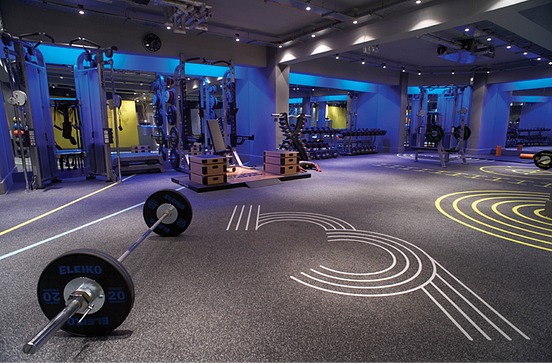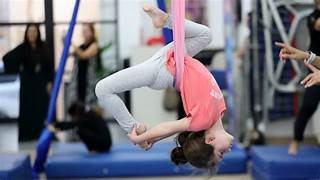
Breathwork for Performance: Oxygen Training Secrets of Athletes.
Discover how elite athletes are using breathwork to unlock peak performance, enhance endurance, speed up recovery, and sharpen mental focus. From diaphragmatic and nasal breathing to advanced hypoxic and box-breathing techniques, this article explores the science, methods, and benefits of oxygen training, revealing the secret strategies that give athletes a competitive edge both physically and mentally.
💪 Fitness Guru
55 min read · 12, Oct 2025

Introduction
Breathing — something so natural that we rarely think about it — is now one of the most powerful performance tools in modern sports. For athletes, breathwork has transcended simple relaxation and entered the realm of biohacking. It is no longer about just taking a deep breath; it’s about mastering the art of oxygen control to enhance physical and mental performance.
From Olympic swimmers to UFC fighters, elite performers have discovered that manipulating breath patterns can enhance oxygen utilization, increase stamina, sharpen focus, and even accelerate recovery. This conscious regulation of breathing, known as breathwork, is revolutionizing athletic training. It aligns physiology with psychology — balancing body chemistry, reducing anxiety, and pushing endurance thresholds beyond their usual limits.
In this article, we explore how oxygen training and controlled breathing are changing the rules of performance. We’ll examine the science behind breathwork, its techniques, and how top athletes use it to gain a competitive edge — all while improving health and longevity.
Section 1: The Science of Breathwork and Oxygen Efficiency (Approx. 600 words)
At its core, breathwork is about controlling the balance of oxygen (O₂) and carbon dioxide (CO₂) in the body. While oxygen fuels our cells, CO₂ plays an equally vital role in regulating how efficiently oxygen is delivered to muscles and organs. The Bohr Effect — a physiological principle — explains that oxygen binds more readily to hemoglobin when CO₂ levels are optimal. In other words, too much rapid breathing (hyperventilation) lowers CO₂ and reduces oxygen delivery to tissues.
Athletes often assume that deeper or faster breathing equals more oxygen intake. However, the opposite can happen: excessive breathing can lead to CO₂ depletion, vasoconstriction, and muscle fatigue. Breathwork teaches the body to tolerate higher levels of CO₂, leading to more efficient oxygen exchange.
One of the key aspects of breathwork is respiratory conditioning — training the diaphragm and respiratory muscles to improve endurance and lung capacity. The diaphragm, often overlooked, is the main muscle of breathing. Stronger diaphragmatic function enhances core stability, posture, and overall oxygen flow.
Scientific research supports the impact of controlled breathing on performance. Studies in sports physiology reveal that slow, rhythmic breathing reduces cortisol levels, lowers heart rate variability (HRV), and enhances parasympathetic activation — the state responsible for recovery and focus.
Athletes who master breath control can maintain composure under pressure, recover faster between intervals, and delay fatigue during endurance events. Oxygen efficiency becomes not only a measure of physical strength but also of mental resilience.
For example:
- Apnea (breath-hold) training used by free divers and swimmers increases CO₂ tolerance and improves oxygen conservation.
- Nasal breathing — promoted by performance coaches like Patrick McKeown (The Oxygen Advantage) — enhances nitric oxide production, a natural vasodilator that improves oxygen delivery.
- Intermittent hypoxic training (IHT) — used by endurance athletes — simulates high-altitude conditions to increase red blood cell count and oxygen-carrying capacity.
The takeaway: optimal performance doesn’t come from breathing more, but from breathing better. Controlled breath patterns align physiology with efficiency, giving athletes the oxygen advantage that separates champions from the rest.
Section 2: Breathwork Techniques Used by Athletes (Approx. 600 words)
Athletes around the world use different breathing techniques, each designed to achieve specific performance outcomes — from endurance to mental clarity. Here are the most powerful and scientifically supported breathwork methods:
1. Diaphragmatic Breathing (Belly Breathing)
This technique involves inhaling deeply into the belly rather than the chest, engaging the diaphragm fully. It increases oxygen intake, stabilizes the core, and activates the parasympathetic system, helping reduce pre-performance anxiety.
How to practice: Inhale through the nose for 4 seconds, expanding the belly; exhale slowly for 6 seconds through the mouth.
2. Box Breathing (Navy SEAL Method)
Used by special forces and athletes alike, box breathing enhances focus and control under pressure.
Technique: Inhale for 4 seconds → Hold for 4 seconds → Exhale for 4 seconds → Hold for 4 seconds → Repeat.
It trains mental calmness and improves oxygen balance in high-stress environments.
3. The Wim Hof Method
Developed by “The Iceman” Wim Hof, this method combines hyperventilation cycles followed by breath retention. It increases blood alkalinity, boosts mitochondrial efficiency, and enhances cold tolerance. Many endurance athletes use it for recovery and resilience.
4. Nasal Breathing
Breathing through the nose filters air, regulates humidity, and promotes the release of nitric oxide, which enhances blood flow. Runners and cyclists use nasal breathing to improve aerobic efficiency and endurance. Over time, it trains the body to use oxygen more efficiently.
5. Alternate Nostril Breathing (Nadi Shodhana)
Borrowed from ancient yoga, this technique balances the two hemispheres of the brain and calms the nervous system. Athletes use it pre-competition to reduce stress and maintain concentration.
6. Hypoxic Breath Training
Involves short bursts of low-oxygen breathing to simulate high-altitude environments. This stimulates erythropoietin (EPO) production — the hormone that increases red blood cell count, thereby improving oxygen delivery to muscles.
7. Resonance Breathing (Coherent Breathing)
Breathing at a rate of around 5.5 breaths per minute synchronizes the cardiovascular and respiratory systems, optimizing HRV and relaxation. It’s particularly beneficial for recovery sessions and post-training cool-downs.
8. Buteyko Breathing
A technique focused on reducing over-breathing and increasing CO₂ tolerance. It enhances endurance and is used by long-distance runners to improve aerobic capacity.
Each technique targets a unique aspect of athletic performance — oxygen utilization, stress regulation, or endurance — but when practiced consistently, they collectively transform the athlete’s body and mind.
Elite sports teams, including those in the NFL, NBA, and Olympic training centers, now employ breath coaches to integrate these practices into training regimes. The outcome: better energy management, faster recovery, and an unmatched mental edge during competition.
Section 3: The Mental and Physical Benefits of Breathwork (Approx. 400 words)
Breathwork is not just a physical tool — it’s a mind-body bridge that connects focus with physiology. Athletes who train their breath often report not only improved stamina but also enhanced emotional control, decision-making, and confidence under stress.
Physical Benefits:
- Improved Oxygen Utilization: Increases aerobic capacity and delays fatigue.
- Faster Recovery: Enhanced oxygenation helps flush out lactic acid and reduces muscle soreness.
- Enhanced Core Stability: Stronger diaphragm supports spinal alignment and posture.
- Better Sleep and HRV: Deep breathing activates the parasympathetic system, leading to quality rest and recovery.
Mental Benefits:
- Stress Reduction: Controlled breathing lowers cortisol and anxiety.
- Improved Focus: Techniques like box breathing enhance concentration and reaction time.
- Emotional Regulation: Helps manage fear, anger, or nervousness before competition.
- Flow State Access: Regular practice can help athletes enter the “zone” — a state of effortless performance and total immersion.
Neuroscientific studies show that breath-focused training enhances brain oxygenation and modulates the limbic system — the brain’s emotional control center. By controlling breath, athletes effectively control their nervous system, unlocking a state of calm power that translates into better performance outcomes.
Breathing — something we do over 20,000 times a day without thought — is now being redefined as one of the most powerful performance-enhancing tools in modern sports. The simple act of inhaling and exhaling, once considered automatic, has become a science-backed strategy used by elite athletes, military professionals, and even corporate leaders to optimize both body and mind. Breathwork, the conscious regulation of breathing patterns, is revolutionizing the way athletes train, recover, and compete. The secret lies not in how much oxygen you take in, but in how efficiently your body uses it. Every muscle contraction, every thought, and every ounce of endurance depend on the body’s ability to balance oxygen (O₂) and carbon dioxide (CO₂). While oxygen fuels cellular energy, carbon dioxide plays a critical role in controlling how oxygen is released from the blood into tissues — a process known as the Bohr Effect. When athletes over-breathe or hyperventilate during intense activity, CO₂ levels drop, causing blood vessels to constrict and reducing oxygen delivery to muscles. This leads to early fatigue, poor recovery, and reduced stamina. Breathwork trains the body to tolerate higher CO₂ levels, improving oxygen efficiency, endurance, and focus. Modern sports science has revealed that respiratory conditioning — strengthening the diaphragm and other breathing muscles — enhances both physical and psychological performance. The diaphragm is not just a breathing muscle; it’s the foundation of core stability and posture. A well-trained diaphragm reduces strain on secondary muscles like the neck and chest, conserving energy during performance. Studies in physiology and neuroscience have shown that controlled breathing lowers cortisol (the stress hormone), increases heart rate variability (a key marker of recovery), and activates the parasympathetic nervous system — the body’s “rest and digest” mode. For athletes, this means better recovery between sessions, sharper concentration during high-pressure moments, and a calm yet powerful mindset that leads to consistent performance. Techniques like diaphragmatic breathing (deep belly breathing) help athletes increase lung capacity and oxygen intake while stabilizing the core. Box breathing, famously used by Navy SEALs, follows a 4-4-4-4 rhythm of inhaling, holding, exhaling, and holding again — a powerful method for controlling nerves before competition. Then there’s the Wim Hof Method, which combines cycles of controlled hyperventilation with breath holds, triggering adrenaline release, boosting circulation, and increasing pain tolerance — especially useful for athletes training in extreme conditions. Another essential approach is nasal breathing, which filters and humidifies air while producing nitric oxide, a natural molecule that improves blood flow and oxygen delivery. Athletes who switch from mouth to nasal breathing often report greater endurance and lower fatigue because nasal breathing promotes slower, more efficient oxygen exchange. Runners, cyclists, and swimmers have also adopted hypoxic training — deliberately restricting oxygen intake to simulate high-altitude conditions. This triggers the production of erythropoietin (EPO), a hormone that stimulates red blood cell formation, enhancing oxygen transport to muscles. In essence, breathwork creates an internal altitude-training environment without leaving sea level. Some athletes also use alternate nostril breathing, derived from yoga, to balance brain hemispheres and calm the mind before high-stakes events. Each technique, though different in practice, shares a common goal — improving oxygen efficiency, mental stability, and recovery. Breathwork’s impact extends beyond muscles and lungs; it influences the brain and nervous system profoundly. Controlled breathing patterns regulate the vagus nerve, which directly affects heart rate, digestion, and emotional balance. This is why many athletes describe breathwork as the “reset button” for both body and mind. The more efficiently they breathe, the more efficiently they think, move, and recover. The benefits of consistent breath training are both physical and psychological. Physically, athletes experience improved aerobic capacity, reduced lactic acid buildup, faster recovery, and stronger core stability. It also enhances sleep quality and immune function — crucial for maintaining performance across long training cycles. Mentally, breathwork improves focus, emotional control, and the ability to stay calm under stress. Many high-performing athletes claim that the ability to regulate breathing during critical moments separates winners from competitors. Neuroscientific research supports this: slow, rhythmic breathing increases blood flow to the prefrontal cortex — the part of the brain responsible for decision-making and composure. In contrast, rapid, shallow breathing triggers the amygdala, the brain’s fear center, causing panic and reduced focus. Therefore, mastering one’s breath is not just about oxygen — it’s about mastering one’s mind. From Olympic swimmers practicing underwater breath holds to MMA fighters using pre-fight breathing drills for calmness, breathwork has become the invisible advantage of champions. The beauty of this practice lies in its accessibility — no equipment, supplements, or expensive tools required. Just awareness and discipline. For beginners, starting with 10 minutes a day of nasal or diaphragmatic breathing can yield noticeable results within weeks — better sleep, more energy, and improved focus. Over time, it conditions the body to operate efficiently even under high stress. For professionals, integrating structured breath training into warm-ups, cooldowns, or even meditation sessions can dramatically improve oxygen management and recovery time. The next frontier of sports performance will not just be about muscle or movement — it will be about breath. Every breath has the power to energize, stabilize, and elevate performance. By understanding and controlling it, athletes can redefine human limits, transforming breathing from a passive reflex into an active tool of mastery. Breathwork teaches one profound truth: the power to perform at your peak has always been right under your nose — literally.
Breathwork for performance has emerged as one of the most powerful, yet often underestimated, tools in modern athletic training. The simple act of breathing, something we do unconsciously thousands of times each day, is now being used consciously by elite athletes to unlock levels of endurance, focus, and recovery once thought unattainable. Breathing is not merely a biological necessity; it is a direct gateway to controlling both the body’s physiology and the mind’s psychology. Every breath we take influences our heart rate, oxygen levels, and even our mental state. Yet most people, including athletes, breathe inefficiently — too shallow, too fast, and through the mouth instead of the nose. This poor breathing pattern leads to over-oxygenation and reduced carbon dioxide (CO₂) tolerance, disrupting the delicate balance required for optimal oxygen delivery to muscles and organs. The scientific principle known as the Bohr Effect explains that oxygen is released from hemoglobin most efficiently when CO₂ levels are adequate. Therefore, the key to better oxygenation isn’t about breathing more, but breathing better — slower, deeper, and more rhythmically. Athletes who understand this concept gain a significant performance advantage, as their bodies learn to utilize oxygen more effectively while maintaining energy efficiency. Breathwork trains the respiratory system to become stronger and more adaptable, enhancing endurance by conditioning the diaphragm and intercostal muscles. A strong diaphragm not only improves breathing mechanics but also stabilizes the core, reducing fatigue and improving posture during physical exertion. The benefits of conscious breathing extend far beyond physical endurance — it’s a bridge between mind and body. Breathwork stimulates the vagus nerve, activating the parasympathetic nervous system, which helps control stress, reduce anxiety, and maintain focus during high-pressure situations. Many athletes have experienced moments where performance crumbles under stress or anxiety; breath control becomes the antidote to that breakdown. Techniques like box breathing, used by Navy SEALs and Olympic competitors, train individuals to stay calm and composed by following a simple rhythm: inhale for four seconds, hold for four, exhale for four, and hold again for four. This rhythmic cycle stabilizes the heart rate and keeps the mind anchored. Similarly, diaphragmatic breathing — or belly breathing — emphasizes deep inhalations that expand the abdomen instead of the chest, increasing lung capacity and oxygen intake while reducing tension in the shoulders and neck. Another powerful approach, nasal breathing, has gained attention among endurance athletes. Unlike mouth breathing, nasal breathing filters, humidifies, and warms the air, promoting the production of nitric oxide — a molecule that dilates blood vessels, improving oxygen circulation and overall cardiovascular efficiency. Athletes who switch to nasal breathing often report greater stamina, lower heart rates, and faster recovery times. Breathwork methods like the Wim Hof Method take things a step further by combining cycles of deep breathing with cold exposure and breath retention, resulting in enhanced resilience, increased red blood cell count, and improved immune response. On the more advanced side, intermittent hypoxic training (IHT) — a form of breath-hold or low-oxygen training — mimics high-altitude environments, stimulating the production of erythropoietin (EPO), the hormone responsible for red blood cell formation. This allows the body to transport oxygen more efficiently to working muscles, significantly boosting endurance over time. But the benefits of breathwork are not purely physical. On a neurological level, controlled breathing affects the brain’s limbic system — the center for emotions and motivation. When breathing becomes slow and deliberate, neural activity shifts from the amygdala, responsible for fear and panic, to the prefrontal cortex, the seat of focus and decision-making. This shift enables athletes to maintain clarity and confidence even in moments of extreme intensity, like penalty kicks, long-distance sprints, or high-pressure competitions. Many elite athletes, including swimmers, martial artists, runners, and cyclists, integrate breathwork into their routines for precisely this reason — it helps them enter the “flow state,” that magical zone of complete immersion where performance feels effortless. Breath control also speeds up recovery by enhancing oxygen delivery and clearing lactic acid buildup in muscles. It improves sleep quality, balances hormones, and supports faster healing after injuries. The physiological benefits are mirrored by psychological calmness; athletes who practice daily breathwork experience reduced stress, improved mental resilience, and greater emotional stability. Techniques like alternate nostril breathing, derived from ancient yoga, balance the left and right hemispheres of the brain, helping maintain equilibrium between energy and calmness. Science continues to confirm these effects: research shows that just five minutes of slow, coherent breathing can reduce cortisol levels, lower blood pressure, and increase heart rate variability (HRV), an important indicator of recovery and cardiovascular health. What’s fascinating is that breathwork is accessible to everyone — it requires no equipment, no supplements, and no cost. It is a self-contained tool that enhances every other aspect of athletic performance. Coaches, sports scientists, and even corporate leaders are now recognizing breath training as an essential part of human optimization. For beginners, starting with ten minutes of daily nasal or diaphragmatic breathing can yield noticeable results in a matter of weeks — from sharper focus to improved stamina and reduced stress. Over time, consistent practice conditions the body to perform efficiently even under physical or emotional strain. As modern athletes chase every possible edge — from nutrition to technology — the power of breath remains the most natural and effective enhancer. Breathwork unites ancient wisdom with cutting-edge science, proving that the human body’s greatest potential lies not in external tools but in internal mastery. When we learn to control our breath, we control our state of being — our energy, our emotions, and our performance. The next frontier of athletic evolution will not only be measured in strength, speed, or skill but in the ability to master breath — the invisible rhythm that fuels every moment of life and performance.
Conclusion
Breathwork, once a meditative or yogic ritual, has evolved into a cornerstone of elite athletic performance. By learning to manipulate oxygen and carbon dioxide levels, athletes can enhance endurance, focus, and recovery while building resilience against stress.
The science behind breathwork shows that performance isn’t merely about strength or speed — it’s about efficiency. Controlled breathing optimizes physiological and psychological balance, giving athletes a tangible edge. Techniques like diaphragmatic breathing, box breathing, and nasal breathing are simple yet profound tools that redefine what the human body can achieve when oxygen is mastered.
In essence, mastering your breath is mastering your performance. Whether you’re a professional athlete or a fitness enthusiast, the key to unlocking your highest potential lies not in another supplement or gadget — but in the breath you take every second.
Q&A Section
Q1: What is breathwork, and why is it important for athletes?
Ans: Breathwork refers to controlled breathing techniques that improve oxygen efficiency, endurance, and mental focus. For athletes, it enhances performance by optimizing oxygen delivery, reducing fatigue, and increasing stress resilience.
Q2: How does breathwork improve physical performance?
Ans: It strengthens respiratory muscles, increases CO₂ tolerance, and improves oxygen utilization in muscles, leading to better stamina, faster recovery, and prolonged endurance during training or competition.
Q3: What is the best breathing technique for athletes?
Ans: There’s no single “best” technique — it depends on the sport and goal. However, diaphragmatic and nasal breathing are most effective for endurance and recovery, while box breathing aids mental calmness and focus.
Q4: Can breathwork help reduce pre-competition anxiety?
Ans: Yes. Techniques like box breathing and alternate nostril breathing activate the parasympathetic nervous system, reducing cortisol levels and helping athletes stay calm and composed under pressure.
Q5: How long should an athlete practice breathwork to see results?
Ans: With consistent daily practice of 10–15 minutes, athletes often notice improvements in focus, recovery, and endurance within 2–3 weeks. Regular integration into training amplifies long-term benefits.
Similar Articles
Find more relatable content in similar Articles

Mindful Muscle: How Meditation Improves Physical Strength...
Meditation is more than a ment.. Read More

Apocalypse Fitness – Training for Survival Without Modern Gy..
Apocalypse Fitness prepares th.. Read More

Breathwork for Performance: Oxygen Training Secrets of Athle..
Discover how elite athletes ar.. Read More

Circus Fitness – Learning Strength Through Acrobatics...
Circus fitness transforms trad.. Read More
© 2024 Copyrights by rFitness. All Rights Reserved.